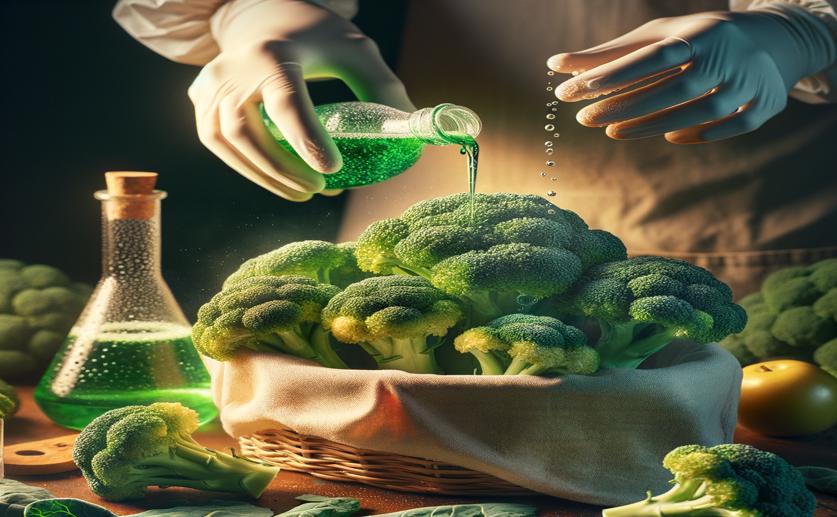
How Hydrogen Peroxide Affects Broccoli Color After Harvest: A Detailed Study
Greg Howard
24th August, 2024

Image Source: Natural Science News, 2024
Key Findings
- Researchers at Shandong University of Technology found that hydrogen peroxide (H2O2) treatment delays the yellowing of postharvest broccoli
- H2O2 treatment upregulates genes involved in chlorophyll and thylakoid synthesis, maintaining the green color and photosynthesis in broccoli
- H2O2 treatment downregulates genes for flavonoid synthesis, reducing yellowing and extending broccoli's shelf life
VegetablesBiochemPlant Science
References
Main Study
1) Integrated transcriptomic and metabolomic analysis reveals the effects and potential mechanism of hydrogen peroxide on pigment metabolism in postharvest broccoli.
Published 22nd August, 2024
https://doi.org/10.1111/1750-3841.17308
Related Studies
2) The active site of magnesium chelatase.
3) The cytosolic thiol peroxidase PRXIIB is an intracellular sensor for H2O2 that regulates plant immunity through a redox relay.
4) Molecular recognition in thylakoid structure and function.
Journal: Trends in plant science, Issue: Vol 6, Issue 7, Jul 2001



 8th July, 2024 | Greg Howard
8th July, 2024 | Greg Howard